|
Blessing for the Longest Night
-by Jan Richardson All throughout these months as the shadows have lengthened, this blessing has been gathering itself, making ready, preparing for this night. It has practiced walking in the dark, traveling with its eyes closed, feeling its way by memory by touch by the pull of the moon even as it wanes. So believe me when I tell you this blessing will reach you even if you have not light enough to read it; it will find you even though you cannot see it coming. You will know the moment of its arriving by your release of the breath you have held so long; a loosening of the clenching in your hands, of the clutch around your heart; a thinning of the darkness that had drawn itself around you. This blessing does not mean to take the night away but it knows its hidden roads, knows the resting spots along the path, knows what it means to travel in the company of a friend. So when this blessing comes, take its hand. Get up. Set out on the road you cannot see. This is the night when you can trust that any direction you go, you will be walking toward the dawn. —Jan Richardson from The Cure for Sorrow: A Book of Blessings for Times of Grief
0 Comments
Have you ever heard or said, "be gentle with yourself?" I know I have... I wanted to write about the intricacies of this statement... In my yoga groups, through my newsletter and on this blog, you've probably heard me talk about how our society is grief illiterate and emotion phobic. We, the bereaved, are constantly surrounded by messages of "toughening up" and encouraged to "get on with life." We receive messages that push us to ignore our emotions ("crying isn't going to bring him back"), and rally against our instincts ("you can't grieve forever"). There are so many "shoulds" in our society - you should drink 8 glasses of water a day, you should do yoga, you should be productive, you should exercise, you should rest, you should, you should, you should. There is so much pressure to perform a certain way, and with a lot of judgement around how that turns out. Now layer on grief; Acute grief is so destabilizing that you don't even have the brain power or emotional space to consider a state like gentleness. You're in survival mode, and it can feel anything but gentle. All this to to say: If you find the concept of "being gentle with yourself" challenging, those might be some of the reasons why. Living with grief is hard. It's mentally and socially challenging. You'll have difficult thoughts ("if only" thoughts, and "would have, should have, could have" thoughts, guilt and anger thoughts and emotions), and learning to live in a post-loss world can be like learning to walk again. You'll fall down a lot. It takes a ton of self-grace, self-compassion, self-space and self-patience to navigate life after loss. Being gentle with yourself puts this grace, compassion, space and patience into action. It helps you to make choices and decisions that are aligned with your "grief needs." In one of my yoga groups this month, we explored how "being gentle with yourself" happens in the real world. Here are some of the take-aways:
How does all this relate to yoga? Well, a holistic practice of yoga (i.e. one that is not just focused on the physical body, but on the mind, and on life!) increases self awareness and promotes loving action. With more self awareness it's more possible to make self-supportive choices and function from a place of grounded-response rather that reactive-reaction. This leads to more gentleness and compassion. In the real world, being gentle with yourself can look like this:
As you can see, "being gentle with yourself" can be anything! It all depends on context and if the action arises from a place of non-judgmental awareness and deep care for your self and your *present* (and ever changing) needs. There's no "right" way to do this, there's only the way YOU need to do it right now. If that can be a gentle and loving way, it makes it more nurturing, tolerable and sustainable. I'd love to hear from you. What does being gentle mean to you, and how does it happen in your life? How do your yoga practices help? * this blog post originally circulated in the Yoga for Grief Support March 2022 newsletter. To sign up to receive a monthly copy click here
When I'm going through a difficult time and someone asks how I am, I find myself saying that "I'm riding the waves as best I can." And it's true. I'm not lying and saying that I'm "fine" when I'm not, and I'm not committing to explaining all the reasons why I'm not excellent. I'm "riding the waves" as best I can, and that makes me feel really proud. Grief is wave-like in nature. There are times when you move towards it and times you move away. Staying with the wave-like analogy, there are times when the sea of your life is stormy and other times when the sea is calm. Jon Kabat Zin says, "you can't stop the waves, but you can learn to surf." So, I suppose, this post is about surfing...how do you learn to ride the waves? 1. Recognize that grief is dynamic. It changes and it has rhythms. Being mindful of your grief reveals a natural rhythm - an ebb and flow. There will be periods of intensity followed by periods of reprieve - where everything is in a constant state of motion...a fluidity. This natural rhythm is how you dose yourself with pain - sinking into the intensity at times and at other times moving way from it and resting. Tuning into this rhythm and honouring it is powerful self care. 2. Identify Impermanence - By understanding and experiencing that all emotions have movement and come to pass, we build trust in our ability to be adaptive in the face of emotional suffering. One of the most powerful and supportive mantra's I have found for myself is "This too shall pass," which is reflected in this thought provoking quote by Neil Jordan: "I hoped that grief was similar to the other emotions. That it would end, the way happiness did. Or laughter." 3. Try not to silence any aspect of your experience. It's easy to be swept up in the "positive vibes only" culture, but with grief, acknowledging the pain will help you "ride the wave" instead of trying to out-swim it. (Refer back to #2 - understanding the impermanence of emotion gives you the strength to tread water, versus exhausting yourself trying to out-swim a wave) 4. Intentionally gather your "tools" that help you cope with the waves of grief. As you live with loss you will learn more about what you need, and when you need it. Be intentional about noticing who and what feels supportive, and what you need to cope. Riding the waves of grief takes practice. I've never actually tried surfing, but I hear it's extremely hard to do and difficult to learn. I've heard it takes a LOT of practice. Even when you can do it (to whatever degree that is!) you are still at the mercy of the wave. Even the most accomplished surfers in the world, still need to practice. (Practice (verb), repeat action to improve: hone, study, discipline, habituate, iterate, polish, do again, become...) The tools of yoga and meditation are also "practices." We don't become experts and then never do them again. We practice them repeatedly, so that our skills are adaptable, flexible, and second-nature when we need them. If we can practice tending to our physical, emotional and mental needs in the relatively safe space of our yoga mat, we will be more prepared when life happens off the mat. It's an act of kindness to yourself. Stay steady with the practice. See you on the waves, Sandy This month, Google is ending its old way of sending my blog posts to your email address, a service called Feedburner.
So, I’m moving over to a new service called follow.it. If I did the transfer correctly you should be receiving this post, and there is nothing that you need to do. (I should, however, give myself a raise for being my best IT employee, haha) I just wanted to make you aware of the change because it will look different when a notification arrives. I’ll put up a new blog post on Monday August 9th called "Let's Go Surfing." If you don’t receive it, try signing up to the right of the post. If that doesn’t work, let me know by emailing me If you are seeing this on my blog and are new here, please give it a follow!
A memory washed over me today. I remembered a family gathering a few years ago. One of my cousins slid in beside me where I was sitting on the steps of a deck. She was sobbing. "What's happening for you right now?" I asked, a bit surprised by her sudden emotion.
"I just looked over at everyone together and I thought, 'Dad should be here,'" she said. "He should be here and he isn't." Her Dad had died 10 years previous. In our society we tend to focus on the TIME that has passed since someone died, instead of the experiences that have passed. Time is irrelevant when it comes to matters of the heart. It doesn't matter how long it has been. What matters is what your heart has or hasn't had to encounter and feel. There was something in that moment with my cousin - a specific mixture of memory and circumstance that made her miss her Dad. Maybe it was the summer breeze, maybe it was the people who were there, or the reminiscing of old times that was happening. Whatever it was, that moment made her encounter her loss in a new and unexpected way. I remember my Dad at that same family gathering alive and sort-of well. I remember seeing him socializing and laughing with his oxygen tank in a backpack on his back. My Dad died in November 2019. I missed our big family Christmas party that year, and then Covid hit. I'm anticipating the next family gathering will bring up raw and new grief because I haven't had to navigate that familiar group of people without him yet. The isolation and physical/social distancing that we've all been facing due to Covid has insulated us against many of the social encounters and functions that would normally and understandably cause a natural wave of grief. We've become "out of practice" of encountering grief in this way. It's not only large family parties. It's little things. It's Sunday family dinners. Going to our family cabin and spending a weekend there. Favorite restaurants, and enjoyed activities. It's seeing my parent's friend group together, and my mom on her own. It's even more that I'm not expecting to be sure. What is it for you? What hasn't happened yet that you anticipate will be hard? Here are a few tips for navigating re-opening while grieving...
IF I HEAR THE WORD RESILIENCE ONE MORE TIME...
We are 9 months into the pandemic and I’ve been working in a hospital the entire time. I’m tired. My cup is empty. I’m generally a pretty hopeful person, but even that is running on low. The R word is all over the healthcare world right now. It's the latest buzzword; considered a protective factor for any sort of stress, trauma, or difficult situation. It’s touted as the key to staying well, as the healthcare system crashes under the weight of Covid, and as our government cuts front-line healthcare staff. We “just” need to be more resilient (insert eye roll emoji here). Every Covid update meeting starts with tips from the wellness committee on how to be resilient. It’s frequently tied to two other R words: Rest and Recover, encouraging us to end our shift, go home, “rest and recover” so we can be ready to do it all again the next day. Recently, we got an email from the wellness committee encouraging moral resilience. “Notice and positively re-frame negative thoughts,” it suggested. “Learn to positively process difficult emotions,” it advised. I prickled at the word positively. By suggesting someone process their difficult experience in a "positive" way, the effect is pacifying, subduing and repressing, not actually integrating. When someone says something like this to me, I know that my emotion and vulnerabilities aren't welcome to be part of the conversation...and when I feel that, I feel un-cared for. And if you don't care about me as a whole person, with my negative thoughts and upset emotions, you don't get to tell me to be resilient. That email made me realize just how condescending and infuriating I find the R word to be. It feels like a re-branded "keep your chin up" message, which is so common in our emotion phobic culture. The word resilience stems from the Latin word "resilire," which meant to recoil or rebound. It is a term that is used to describe both objects and subjects. Objects/materials are described as having good resilience if they spring back into the shape they started in. In humans, it describes “the capacity to recover quickly from difficulties; toughness” (Oxford Dictionary). It is someone's ability to “bounce back” from difficult and challenging situations. It stings to look at the state of our world - with reality-tv-politics, genocides, colonialism, white supremacy, climate change, the rapid extinction of species, global pandemics, natural disasters, crashing economies and healthcare systems - and wonder what the hell we are actually planning on “bouncing back” to?! Surely THAT is not what they mean by resilience, is it? Resilient is what the general public should be - with ongoing lock-downs, cumulative losses, and heaps on uncertainty, we are told to be resilient: Learn resilience. Practice resilience. Perform resilience. Never-mind the fact that mental health and grief support were hugely underfunded BEFORE the Covid pandemic and we are headed straight into an “echo pandemic” of loss and grief. While economic recovery plans are being rolled out already, organizations promoting mental health support and grief support are still lobbying the government for increased funding, resources and support. Resilience is all over schools! Kids are expected to be resilient as the routine of school has been upended, and their social networks have completely been shut down. Students, with all sorts of individual learning needs are expected to be proficient at online learning, while educational assistants and support staff have been let go, and program funding for kids with developmental delays who need specialized support is being cut. Don't put resilience on them, especially if there is no infrastructure or support in place to actually meet their needs. Do we expect the healthcare system to magically bounce back just by thinking positively about it? No! It will bounce back by being a priority of the government and they will throw money at it. What about resilience and grief? I have had deep, personal and major losses that knocked my legs from beneath me, and punched me in the stomach. Oh how I wanted to bounce back to my old life. To erase the tragedy of loss and resume right where I left off. I woke up everyday for years wishing that I could somehow have my old life back. I can emphatically say: I didn’t “bounce back.” There was no bouncing in deep grief, unless you consider bouncing between emotional states that brought me to my knees over and over again. I didn’t spring or rebound to my previous state. I wouldn't even use the word "recover." I integrated the shit-storm of grief into me as a whole person, and continue to do that work, to this day. I completely changed as a person and had to learn how to live life anew, with a lack of resources, social support, and a general societal misunderstanding (or ignorance) about the human need to grieve. Don’t tell me to be resilient. Pushing resilience effectively glosses over the real, hard, natural fragility of being human. Taken from a New York Times article called The Profound Emptiness of Resilience consider this question "Why rise from the ashes without asking why you had to burn?"
This is the part that is missing. The acknowledgment of the burning times. True, deep, supportive, spacious, caring acknowledgement of the very things that are breaking our spirits, and breaking our hearts. We need space for THOSE first. Re-framing negative thoughts into positive ones isn’t enough. Those negative thoughts and difficult feelings have important things to say. We can’t just squelch them with positivity and hope for integration.
Yes, I want to learn how to adapt to change well. To weather life's storms with compassion and grace. I want to grow more whole as a person because of hardship and not break into a fraction of what I was. I want to have a sense of inner coherence, peace and meaning when I engage with my life.I want to respond with integrity to challenges, complex situations, distress and setbacks. I want to know my values, and be self assured in how I live them. Yes, I want all those things. But it's not about rising above my challenges to get there, it's about integrating them into who I am as a person. I don't think that "bouncing back" or resilience describes how that happens. There is a great model of grief support that I feel is a more appropriate image than bouncing back. It is called Pathways Through Grief and was developed by Karen Martin and Sandra Elder and was published as a chapter in a book called “Personal Care in an Impersonal World: A Multidimensional Look at Bereavement,” in 1993.
As you can see, the model is shaped like a figure-8. There is no starting point, or end point and no “steps or stages.” Rather it is open ended and flowy, suggesting a person would move around the 8 in a continuous way throughout their life.
The top half of the 8 describe more of an outward lived experience composed of things like exploring the world, investing yourself in relationships/things and hope. At other times you will be in the lower portion of the 8, on a more inward journey experiencing inner emotions such as protest,despair and detachment. The people standing outside the model represent your with your world including influences, support, and challenges. This model is unique for you as an individual. The middle part of the figure 8 says "meaning," which is the central concept of this model. Regardless of where you are in the figure-8 there is opportunity to use those experiences to define and make sense of your life, which then influences the path you take around the 8 and in your life. It’s important to highlight that both ends of the 8 (the “light” and the “dark”) intersect with meaning - the detaching and despairing life experiences have as much of an influence in how your life is shaped, as the hopeful and joyful experiences. This model speaks to the impermanence of life - we are always changing and experiencing different things. "Flowing through" feels more possible than "bouncing back." While, I'm sure the intention of the resilience movement is pure, I don't feel the word gives us enough space to acknowledge how much living life changes us. So, how can we frame the word resilience in a way that accounts for the impermanence, vulnerabilities and ALL the emotions we carry? Here are some points to consider:
“We think that the point is to pass the test or to overcome the problem, but the truth is that things don’t really get solved. They come together and they fall apart. Then they come together again and fall apart again. It’s just like that. The healing comes from letting there be room for all of this to happen: room for grief, for relief, for misery, for joy.” First of all, it's important to know all the ways grief affects you... Then, we can look at all the ways yoga is supportive...and there are many... How has it helped you? Let me know in the comments below.
"Do not be daunted by the enormity of the world's grief. The events in our world right now (climate change and losses due to fires and floods, the Covid pandemic and the uprising against discrimination and oppression) have brought grief, loss and trauma to the forefront of our collective experience, albeit in different ways. I feel like we are all the care-givers of a grieving world. And it is SO HEAVY. With all this going on, I’ve been wondering: How can I care for the people who need it? How will we cope with ALL of this? What can I do? I feel frantic to do something - get on zoom, get on Facebook or Instagram live, plan something to help...on and on and on...and simultaneously I think, "I don't know what to do." This tension between the two states is what this post is about. The quote that I opened this newsletter with has been a guiding one for me: "Do not be daunted by the enormity of the world's grief. Do justly now, love mercy now, walk humbly now. You are not obligated to complete the work, but neither are you free to abandon it.” I will not abandon the work that needs to be done in the realm of grief support. And yet, another guiding mantra I have is,“You are helpful in your helplessness.” At first glance, it can seem impossible to balance these two things: Helplessness, but not abandoning the grief I witness. I believe, however, that these two states are not incompatible with each other. Rather, there is a creative tension between them. They need each other. Especially now. In this context, being helpless doesn’t mean doing nothing. It means understanding that there is nothing that you can do to fix or take away someone’s pain. Recognizing helplessness creates connection and support because the griever is less alone when there is someone else willing to sit in the darkness with them. This, actually, is really hard for us helpers. Sometimes, the more we explore someone’s pain with them, the harder it is to remain "helpless." I see this in myself at times in my personal and professional life, when I’m witnessing someone else's grief or uncertainty. I want to jump in to make it all better. I want to take away the pain. I want to spew solutions, and tell them “everything is going to be OK.” {In moments like this, when you notice yourself placating, as yourself, "What am I trying to make more comfortable?" So often it's OUR OWN discomfort we are trying to appease, not the person we are supporting.} Although this protective reaction is well meaning, it's not helpful. I have to mentally stop myself. I remind myself that there is absolutely nothing that I can say that will take the person’s pain away. Simply listening, and upholding the experience of the other person is the most genuine, compassionate and helpful response. Listen to their story, listen to their hurt. Listen to their fears. Don't try to change it for them. Stay humble. Henri Nouwen captures this so vividly in this quote: “Healing means, first of all, the creation of an empty but friendly space where those who suffer can tell their story to someone who can listen with real attention. As healers we have to receive the story of our fellow human beings with a compassionate heart, a heart that does not judge or condemn but recognizes how the stranger’s story connects with our own. We have to offer safe boundaries within which the often painful past can be revealed and the search for a new life can find a start. Our most important question as healers is not, what to say or to do? But, how to develop enough inner space where the story can be received? Healing is the humble but also very demanding task of creating and offering a friendly empty space where strangers can reflect on their pain and suffering without fear, and find the confidence that makes them look for new ways right in the center of their confusion.” As a grief care-giver, you create the conditions for the griever to find their own way through their pain. This is how, as the quote says, "you are not obligated to complete the work." Everyone has to integrate their own loss themselves... Still, we cannot abandon grief, grievers, or ourselves. In our society, how we deal with grief is a social justice issues. Perhaps it is more accurate to say how we don’t deal with grief is a social justice issue. We must commit to contributing to social change and justice for the grieving and the bereaved. We must remain open to witness and receive the discomfort within ourselves, and in our societies. We must do the personal work we need to be able to be in genuine connection and compassionate presence with others. We cannot abandon grief. If we can support grief we can empower grievers, and with empowerment, people can integrate their losses in meaningful ways. We can be helpful in our helplessness. “As we practice alone, but together, we explore potent practices that open the heart and mind to insight, intimacy, and interconnection with all life.”
I recently posted the quote above in a Yoga for Grief Support Participant Group,
followed by this: How are you all doing this week? What have your practices looked like, and what insights have you had? Once it was posted, I felt a bit sheepish...because I have to admit that I haven’t been on my yoga mat once. So, then I left the following comment: "I haven’t been doing ANY yoga. I think about doing it a lot but haven’t got down on the floor to do anything formal. I’ve been stretching in the shower and taking deep breaths before I fall asleep. Lots of reasons for this: my brain is DONE at the end of the day being one reason, and the second is we have a puppy at home and he is ALL OVER me if I am on the floor (or the couch, or anywhere really)! Oh well- yoga will be there when it feels more possible.” I was trying to communicate that sometimes yoga takes a back seat to other things, and that is OK. And it is, but... I’ve realized that this rhetoric is a really narrow way of viewing yoga and it’s place in my life. Let me explain: A few weeks ago, I was messaging with a friend of mine who practices yoga and mindfulness. We were talking about people who were choosing to not physically distance during the Covid pandemic and wondering why they weren’t, when the risk of spread was so high. “Is it our yoga that keeps us somewhat mindful?” my friend asked. “I totally think that yoga and mindfulness makes people comfortable with discomfort," I replied, "I also think those practices keep us grounded and allow us to understand interconnectedness and unity." The restrictions that are placed on us right now, have the potential to make us more “itchy.” We are itching for our favorite restaurant food. Itching to get campsites booked and summer plans made. Itching to have a patio beer with our friends. Itching for all this Covid stuff to be DONE. “Everyone wants to scratch the itch," she said. “Learning to recognize the itch and not scratch it is exactly it,” I said. “It’s all just mind- stuff – craving, desire, habits – becoming aware of these and disengaging from their power over us is what mindfulness and meditation are trying to teach."
*Mindfulness is an umbrella term for both formal practices (meditation and yoga are examples) and
informal practices (mindful awareness as you move through your day). Mindfulness is an intentional quality of attention. You pay attention, on purpose, simply for the sake of non-judgmental noticing. You notice the habits of the mind - the monkey mind, the habits, the cravings - but you create a gap between their stimulus and your response. Mindfulness slows everything down so it can be captured in awareness, and then asks, "What is the next right thing?"
Therefore, I must correct myself. I haven’t been doing yoga asana (the postures), but I’ve been very yogic and mindful in how I am living.
Most people think only of the physical poses when they think of yoga. In reality however, the poses (or asanas) are only a small part of a yoga practice. The Yoga Sutras of Patanjali refer to 8 limbs (or parts) of a yoga practice. You can read more about them here, but in this post I’ll give you examples about being yogic in Covid times.
Limbs 1 and 2 - the Yamas and Niyamas:
The first two limbs are about ethical and moral principles. The Yamas reflect how you are in the world and include non-harming, truthfulness, non-stealing, non-hoarding and how we use and direct our energy. Covid living requires sensitivity towards public health ethics, and makes us critically look at how our actions affect others in the world. I’m aware of, and understand how my actions may hurt other people, and I am choosing to live in a way that significantly limits harm. more vulnerable people. I am self-isolating, washing my hands, wearing a mask in public places. I'm truthful and honest with myself and others about my exposure risks, which is required in my vocation as I work in a hospital with vulnerable patients (immuno-compromised and end of life). I don’t steal personal protective equipment from work as I know that front line workers need it and there are limited quantities. I have yet to hoard toilet paper. I’m no longer just thinking about getting groceries – I’m thinking of how we are all connected – I’m thinking of the people who are picking the fruit, transporting it, stocking the shelves, scanning the items through check out. I am aware of how we are mutually responsible to each other. I’ve spent a lot of time reflecting on how to use my energy wisely and have come to the conclusion that I can only do what I can do, and I've stopped fretting about what others are doing. This ethical and moral action in the world does not preclude the oath that I have to myself. The second limb, the Niyamas encompass individual observances to remain healthy and well. It includes: taking care of my body (using my neti pot, hand hygiene, rest, hydration), contentment (ie. not waiting for the storm to pass, but learning to dance in the rain), discipline (creating a routine and structure to my day), self-study and self-reflection (I’ve been reading, journaling, analyzing my dreams) and spiritual practices. All of this has made me aware of my cravings and my habits. Slowing down has made me look more clearly at the choices I am making in all aspects of my life. I am more mindful by necessity, which by the way, is exhausting because I’m no longer living on autopilot and habit. Limb 3, 4 and 5 - Asana, Pranayama, and Pratyahara: The next 3 limbs encompass the yoga postures, breath work and turning your attention inward. I've already established that I haven't been consistent at all with doing the physical postures of yoga, but I have been moving my body on a regular basis. I’ve been breathing deeply before bed as I fall asleep. I’m aware of my inner state – my fatigue, my energy levels and my bandwidth. At work, I’m required to report to complete a health symptom screen which forces me to pay attention to my body. The yogic art of this is knowing where the line is between awareness/assessment versus obsession/panic (some days it's a moving target), which brings me to the last few limbs of yoga... The 6th Limb - Dharana: Concentration: focusing the mind on ONE thing, not everything. The potential for distraction into a slough of bad news is high right now. Mindfulness meditation and yoga have taught me that my mind, by it's very nature, tends towards distraction, problem solving, organizing and planning. Living in the reality of Covid reveals that we simply DO NOT KNOW the duration, path or outcome out of this. The mind does not like this uncertainty, and therefore tries even harder to figure it all out. I'm aware of this. I'm also aware of the power and choice that I have to disengage from the merry-go-round of thinking that is so easy to spiral into. Basically, I try to think about one thing, not everything. I’m not multi-thinking, or multi-tasking and it's been quite lovely. The 7th and 8th Limb - Dhyana and Samadhi: These two limbs, meditative absorption (Dhyana) and bliss (Samadhi), arise spontaneously as a result of all of the other elements of yoga combined. These limbs do not describe an escape to bliss, rather, realizing peace in your life, exactly as it is, without disturbance of your thoughts, judgments, habits, distractions, or distorted perceptions. The literal meaning of the word yoga comes from the Sanskrit root word yuj, which means to join or unite. Covid has made me consider union on a broader scale, including all humans around the world but also extending beyond to plants, animals and the earth. We have all seen how our past actions have negatively affected the planet, and in recent weeks, how our current actions have created the space for the earth to regenerate and heal. Having looked at Covid under the philosophy and framework of yoga, we can circle back to the quote that started this post, and read it again: “As we practice alone, but together, we explore potent practices that open the heart and mind to insight, intimacy, and interconnection with all life.” ―Mark Karly Coleman For me, it takes on a whole new meaning. As it turns out, I've been practicing yoga this whole time <3 The literal meaning of the word yoga comes from the Sanskrit root word yuj, which means to join or unite. Practically, however, yoga is a method of discipline, technique, philosophy, and ethical conduct, with the aim being to completely know yourself and be at peace with yourself. Most people think only of the physical poses when they think of yoga. In reality however, the poses (or asanas) are only a small part of a yoga practice. The Yoga Sutras of Patanjali refer to 8 limbs (or parts) of a yoga practice. I’ve outlined them below*: *Although I have listed the 8 limbs as separate, they are all interconnected and interwoven with each other. Yoga is a holistic practice that taps into multiple facets of mind and body, and has several cumulative effects. This synergy is difficult to capture with words. Nevertheless, I’ve broken down the 8 limbs of yoga below, to assist with your understanding of a holistic yoga practice, beyond just the poses…*
Interestingly, the purpose of yoga is the cessation of churning thoughts in the mind. Combined, these 8 limbs settle a fragmented, vacillating and distracted mind into a single point of focus. A calm and focused mind is one that can connect (unite) with the body. This focused attention and connection creates the freedom to live inwardly and outwardly in an aware and peaceful way. This is yoga. Yoga for Grief Support: Yoga is not a fix for your pain, rather it’s a support that tends to the body and the mind. It activates your own inner resources to create the conditions you need to heal. In congruence with the word yoga meaning to unite, after loss yoga helps to “unite” all the parts of yourself that feel broken and dismembered; so that you are re-membering in a way that integrates the loss into your life, so you can eventually live well again. Yoga encourages you to be an active participant in your own healing. It’s a tangible practice that you can do by yourself and for yourself. Often, the effects of a practice can be felt the first time your try it, which is encouraging, and makes it more likely you will do it again. Yoga is a process. We call it a “yoga practice” because each time you get on your yoga mat it can feel different and we practice ‘showing up’ with compassionate curiosity, tending to each moment, each sensation and each emotion as it arises. My only "rule" in exploring your mind and body through yoga is to be gentle and kind with yourself. “Words fail to convey the total value of yoga. It has to be experienced.” – B.K.S. Iyengar |
AuthorSandy Ayre Categories
All
Archives
December 2022
|
Classes
|
Helpful Info
|
|


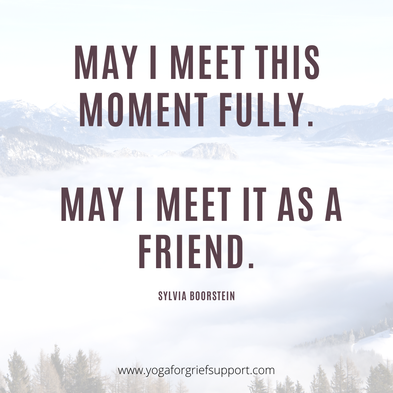
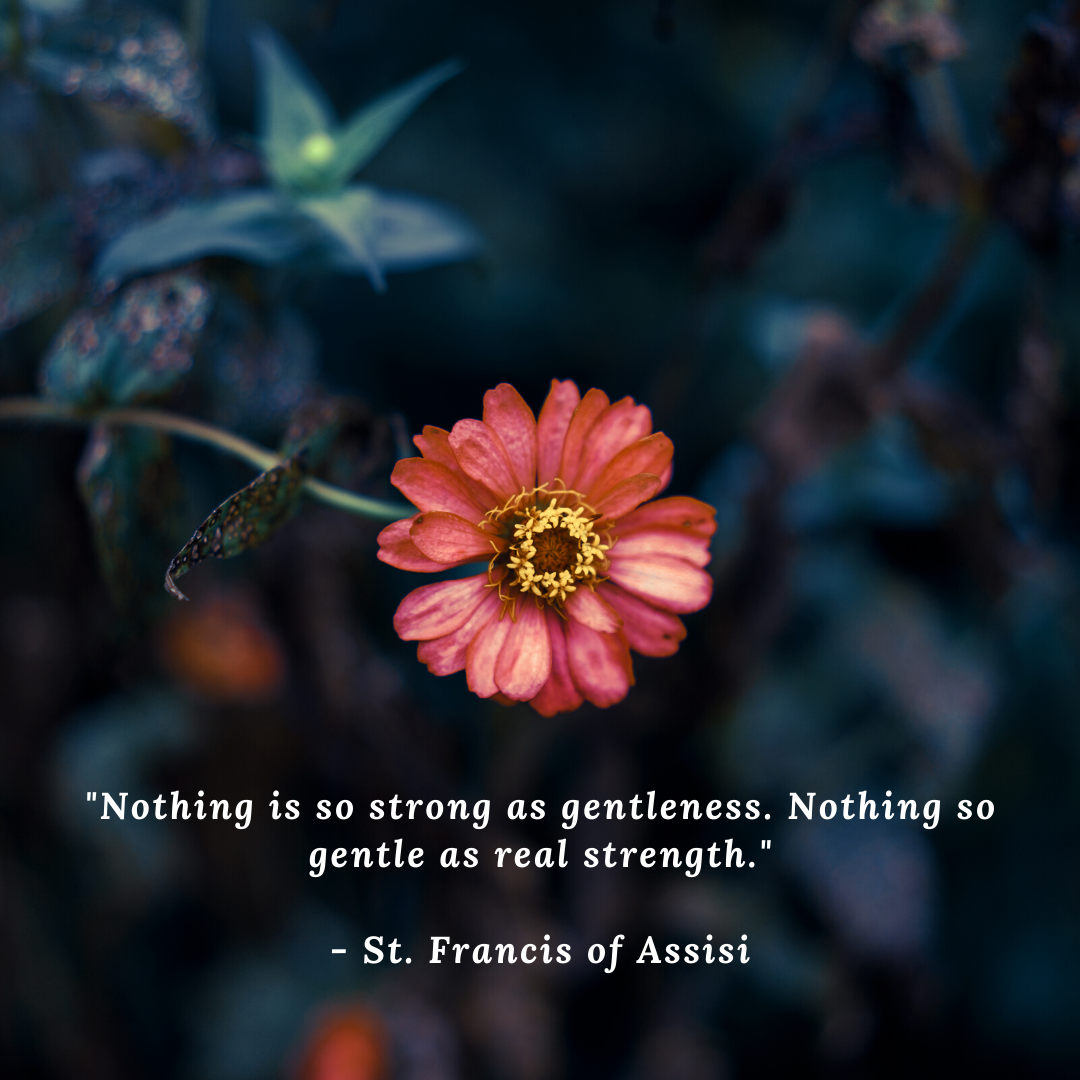



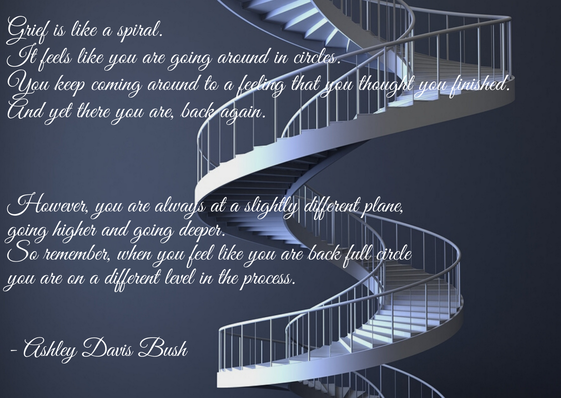
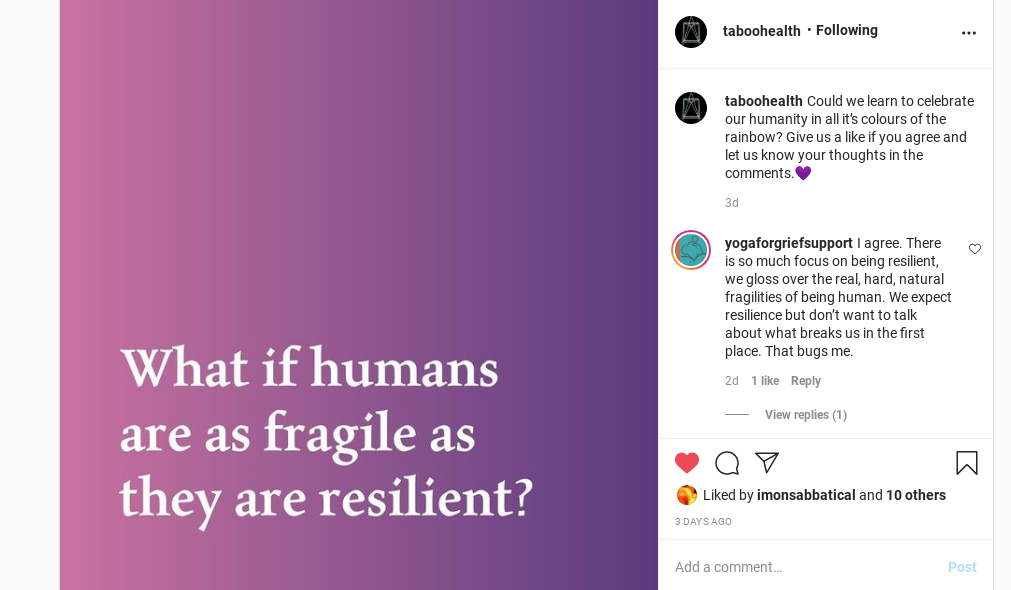
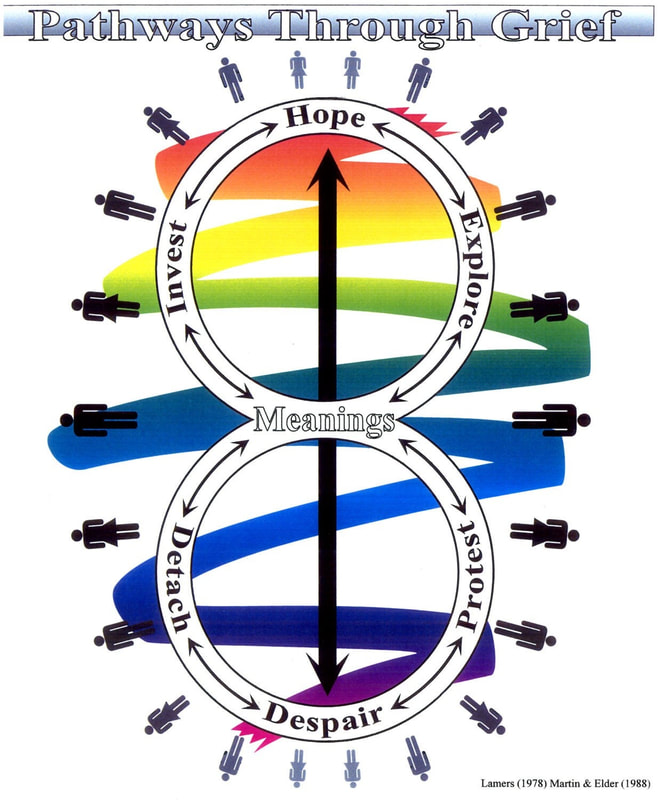

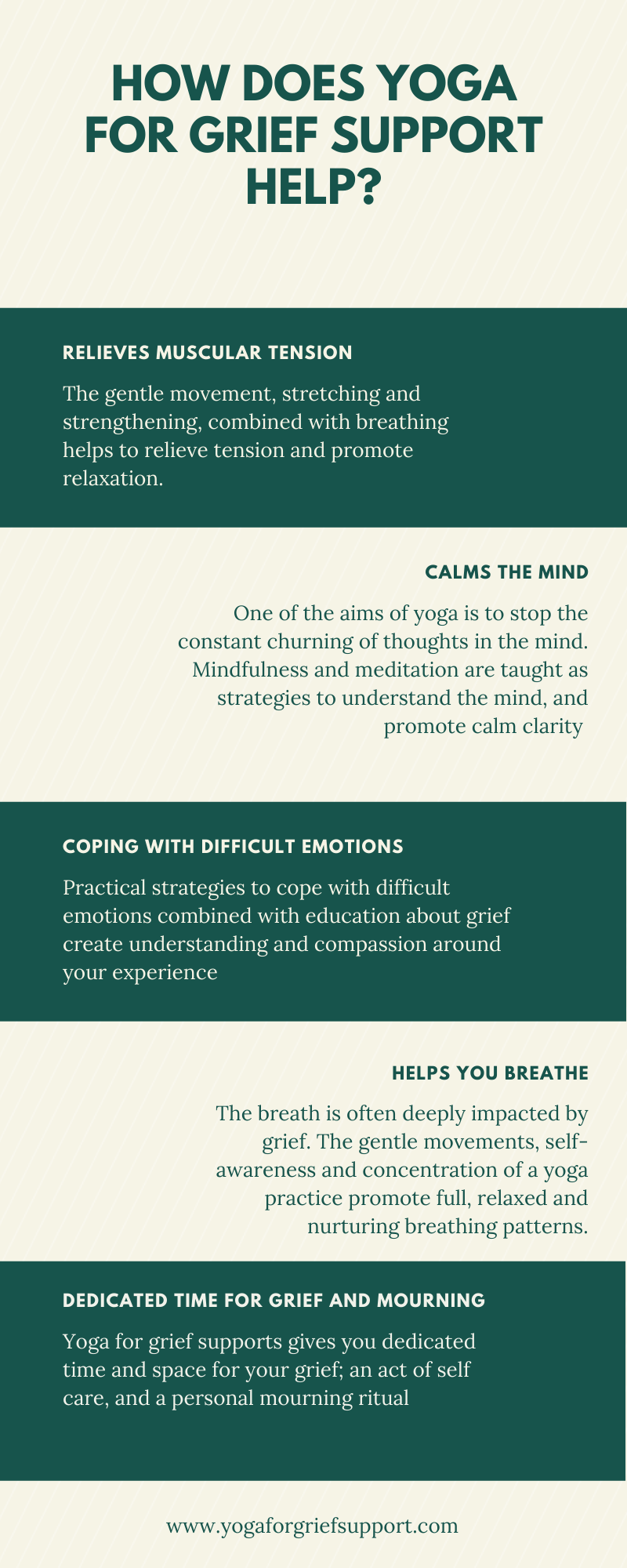


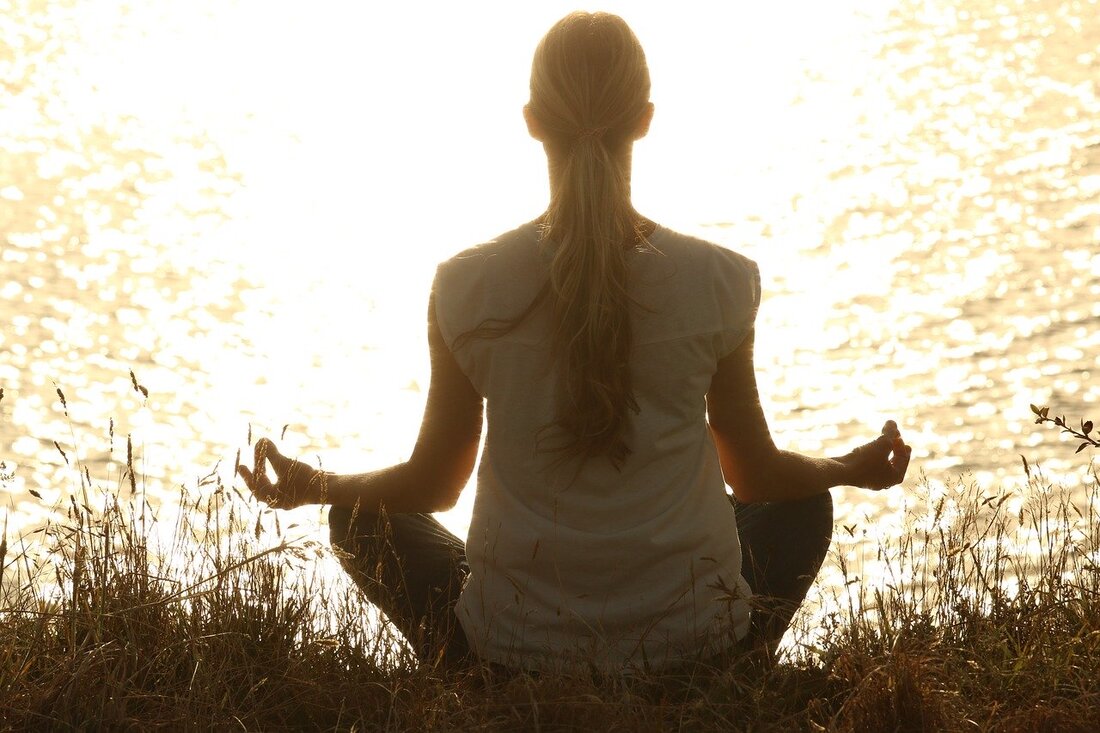
 RSS Feed
RSS Feed
